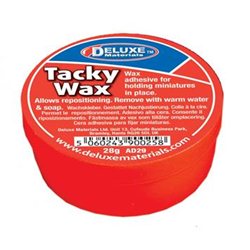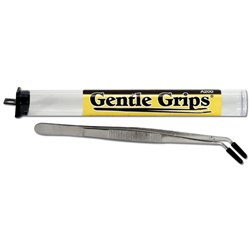Static grass puffer bottles work by manually charging model grass fibres with static electricity. When the charged...
No products
Product successfully added to your shopping cart
There are 0 items in your cart. There is 1 item in your cart.
Search Tips
How can I accurately position small parts when making a model?
One of the trickiest tasks when model-making can be the positioning of very small or delicate parts. In most instances, modellers will generally use tweezers to achieve this. The problem with exceptionally small parts is they can be difficult to position in the tweezers in the first place. Self-closing tweezers apply a set pressure to any part that they hold and if the pressure is in excess of that required it can result in the tweezers emitting the 'Twang of Death' with the resultant catapulting of parts to the four winds. This generally results in outbursts of colourful language and ensuing cases of 'Housemaid's Knee'.
There are some tool options that can be very effective in allowing modellers to position small parts with precision. Tacky wax is not a glue, rather it is a sticky substance formulated specifically to allow accurate and precise positioning of small parts on models, dioramas or layouts. One other useful benefit it offers is that items can be temporarily positioned and easily removed or relocated later without the need for glue. This can be very useful in the case of temporarily positioning figures on a layout in certain locations, or in holding parts in place whilst adhesives are used to secure them in a particular location.
Gentle Grips are another tool that can be useful in working with small or delicate parts. These are a small pair of tweezers with rubber caps positioned over the ends of the prongs. These can be used to exert gentle pressure sufficient to hold the part safely in place. The rubber caps are non-slip and exert a gentle but firm pressure on the part in question making it a very useful option when dealing with small parts.
Both of these options offer soft but firm control which makes them ideal for handling and positioning a range of items from photo-etch parts to OO/HO or N Gauge figures safely and with precision.
Click here to receive the tips weekly in your mailbox. You can unsubscribe at any time.









